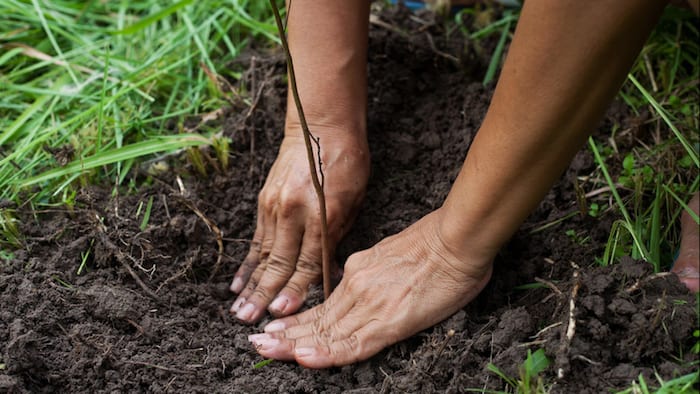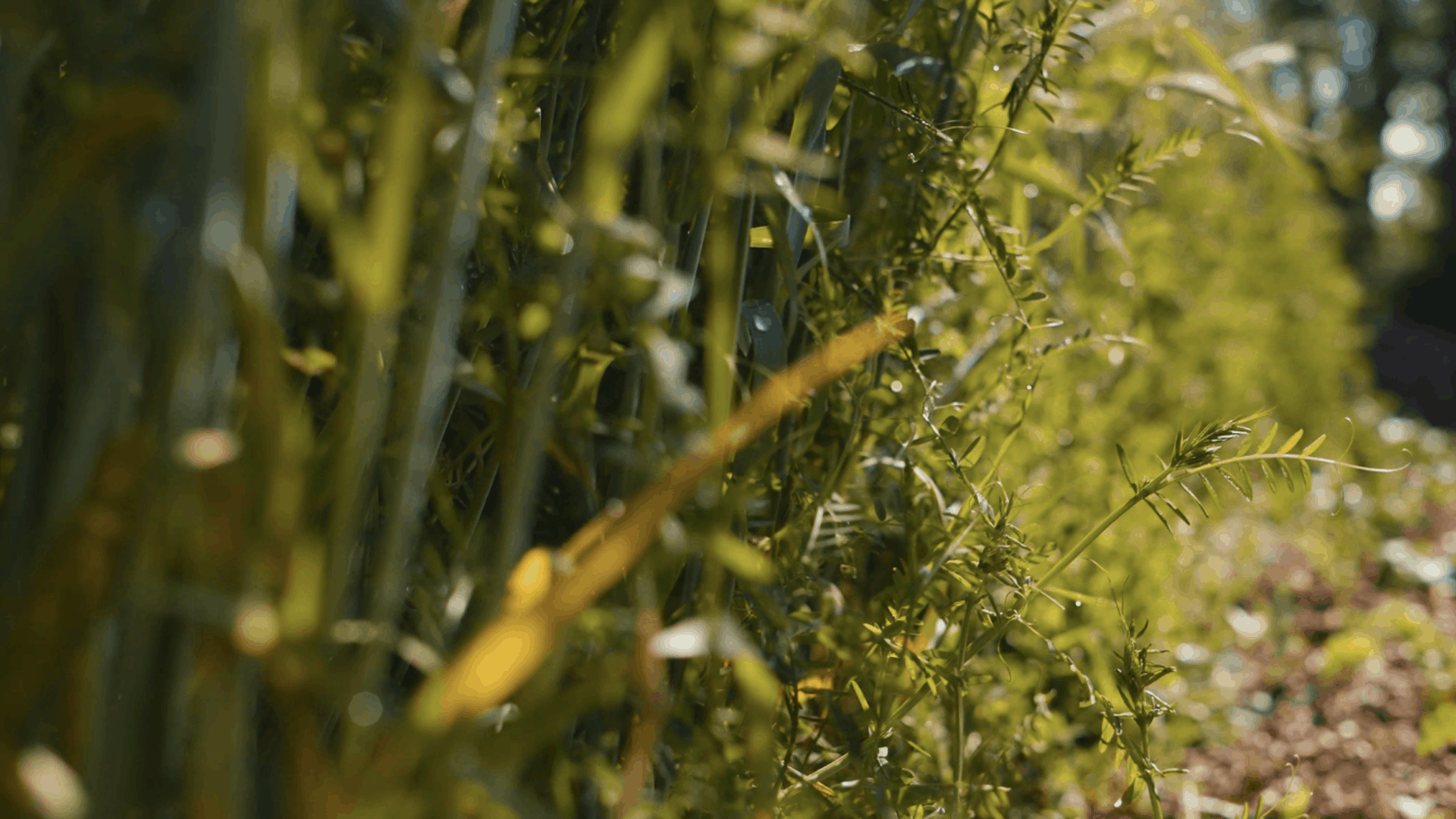Lawn & Garden
Lawns can be one of our most expensive and time consuming home items. Between mowing and fertilizing and weed preventatives, there goes a lot of time and money. But that’s not the whole story. Not often considered is the cost to the environment. Fertilizers and herbicides can be detrimental to the ecology and water quality of the county with their associated hidden costs. For most of us, we also pay the extra cost of cleaning these chemicals out of our drinking water.
The Marion County Soil & Water Conservation District is actively helping landowners make better choices for their lawns and gardens. Soil has historically been a main focus for the district and we are involved in protecting the soil from erosion and improving the health of the soil in ecologically wise ways.

Garden problems solved by the Plant Doctor
Purdue Extension specialists can guide home gardeners in the proper care of their plants with the help of treatment methods based on proven research. The Plant Doctor can help home gardeners with dozens of problems for more than 200 plants.
“Every year, homeowners invest millions of dollars in their landscaping materials, and due to insect diseases and sometimes a lack of experience, problems come up. This is an affordable and efficient way to fix those problems,” said Janna Beckerman, a Purdue Extension plant disease specialist.
Autumn Lawn Care – Naturally
Autumn Calendar:
Late Summer (August and September)
- Hand-pull weeds or spot treat with herbicidal soaps, as needed.
- Irrigate, as needed.
- Mow, as needed.
- Monitor for grubs, chinch bug, and sod webworm.
- Fertilize in September.
- Renovate or overseed in early September, if needed.
- Corn gluten application (only if no seeding work is being done in the lawn).
Fall (October)
- Mow, as needed.
- Hand-pull weeds or spot treat with herbicidal soaps, as needed.
- Irrigate, as needed.
- Core aerate, as needed.
- Topdress with compost in conjunction with core aeration.
- Chop up fallen leaves with mowing.
Late Fall (November and possibly into December)
- Continue to mow as long as the grass is growing.
- Chop up fallen leaves with mowing.
- Apply late fall fertilizer.
Seeding a New Lawn
How’s your lawn looking? For some, our lawns look so bad that overseeding or even starting completely over with a new lawn may be needed. When starting a new lawn or overseeding an existing one, it is best to use a blend or mixture of high-quality certified seed cultivars containing zero percent weed seeds. This information will be noted on the seed label. You can find information on various cultivars at the National Turfgrass Evaluation Program web site at http://ntep.org/.
The best time to seed a lawn in Marion County is between August 15 and September 30, though seeding can be done through mid- October also. Lawns seeded later in the fall may fail because the seedling grass may not produce sufficient growth to survive the winter.
Fall Fertilization
University research has shown that a schedule of late summer/fall (September) and late fall (November) fertilization is best for home lawns. This is when turfgrass plants are enlarging their root systems. Good root growth in the fall will result in better top growth in the spring. Fall fertilization also contributes to better color late in the fall, earlier spring green-up, and fewer disease problems.
The first step for natural lawn care is to have your soil tested to see what your lawn’s true needs are. Fertilizer bags will label how much of the major nutrients – nitrogen (N), phosphorus (P) and potassium (K) are available in their fertilizer. It is best for the environment to use low or no-phosphorus fertilizers (0 will be the middle number) as phosphorus is a major pollutant of our waterways. Phosphorus is usually available in the soil anyway but extra may be needed if you are reseeding your lawn.
Choose natural organic fertilizers which release nutrients more slowly than synthetic, making them available steadily over a longer period of time. Natural organic fertilizers preserve the biotic quality of the soil, encouraging earthworm populations and normal microbial activity. They often contain organic matter, derived from animal manures and previously living plant and animal sources. Be aware that some fertilizers sold as “organic” or “natural” may be enhanced with synthetic chemical fertilizers. Always read the label.
To determine how much fertilizer to apply you must know: 1) the analysis of the fertilizer, 2) the amount of actual N needed per 1,000 square feet of lawn as determined by your soil test, and 3) the square footage of lawn to be fertilized. A general rule of thumb is to apply 1 pound of actual N per 1,000 square feet. Divide actual N needed by the percentage of nitrogen contained in the fertilizer, expressed as a decimal, to determine how much fertilizer to apply. For example, if using cottonseed meal with an analysis of 3-1-1: 1.0 ÷ .03 = 33 pounds. Thirty-three pounds of cottonseed meal per application are needed to supply 1 pound actual N per 1,000 square feet.
Information on how to take a soil sample and a listing of soil testing labs is available on our website under the Soil Tab.
Fall is a wonderful time to start creating compost. Don’t just throw those leaves away – add them to a composting pile and you will have wonderful nutrients to add to your gardens and flower beds next spring! See the link below for a Compost Guide from the EPA.
If you don’t want to compost read on …
Leaf Removal
In the fall, tree leaves left on the lawn over a long period of time can kill patches of turfgrass. Dry leaves may be chopped finely by running a mulching mower over them. These may then be spread evenly over the lawn with a leaf rake and left to work their way into the soil. Or, spread leaves over the lawn and mow over them in two directions. When kept up with weekly, leaves can be easily recycled into the lawn. If there are too many chopped leaves to sift easily into the lawn, they should be removed and composted. Work done at Michigan State University has shown that recycling tree leaves on a lawn will not increase thatch build-up.
Don’t throw that away! Compost It!
Composting has many benefits including decreasing the amount of trash taken to the landfill, improving the health of the soil, and providing needed nutritional benefits to our lawns and gardens. The EPA has created a guide to composting to help get your started. Download their guide HERE.
Also, check out more information below under Additional Resources.
Soil Testing Links
Below are links to websites with information on soil testing and lists of soil testing labs:
Marion SWCD Soil Testing fact sheet
Purdue Extension – Marion County
Products
Local garden centers may or may not carry organic lawn care products such as corn gluten and fertilizers. Products are available from the following catalog sources (not an exhaustive list):
Gardens Alive!
812-537-8650
gardensalive.com
Offers corn gluten, organic fertilizers, and grass seed mixtures (including those with endophytes) This is an Indiana company!
Gardener’s Supply
1-800-427-3363
gardeners.com
Offers corn gluten, biological pest controls, composting equipment
Extremely Green Gardening Co.
603-427-0299
extremelygreen.com
Offers fertilizers, corn gluten, nematodes, grass seed
Planet Natural
1-800-289-6656
planetnatural.com
Offers corn gluten, fertilizers, organic and low-toxicity herbicides, and weeding implements
Peaceful Valley Farm Supply
888-784-1722
groworganic.com
Offers fertilizers, weed and pest controls, composting supplies, soil testing supplies
Sunday Lawn Care
Offers lawn plans based on your soil, climate & lawn. Includes soil testing.
Additional Resources
- Lawn Care
- Soil Testing
- Improving Soil for Urban Gardeners
- Composting
- Mulching
- Iowa State Lawn & Garden site
- Lawn Reform Coalition
- Sustain Indy – Government site
- Hoosier Gardener
- Schultz, Warren. The Chemical Free Lawn: The Newest Varieties and Techniques to Grow Lush, Hardy Grass.Emmaus, PA, Rodale Press, 1996.
- Tukey, Paul. The Organic Lawn Care Manual: A Natural Low-Maintenance System for a Beautiful, Safe Lawn. Storey Publishing, 2007.

